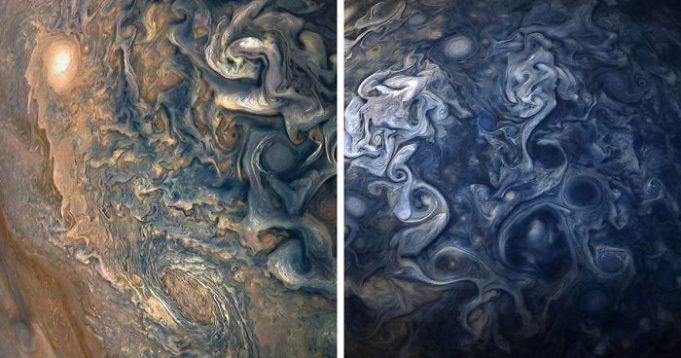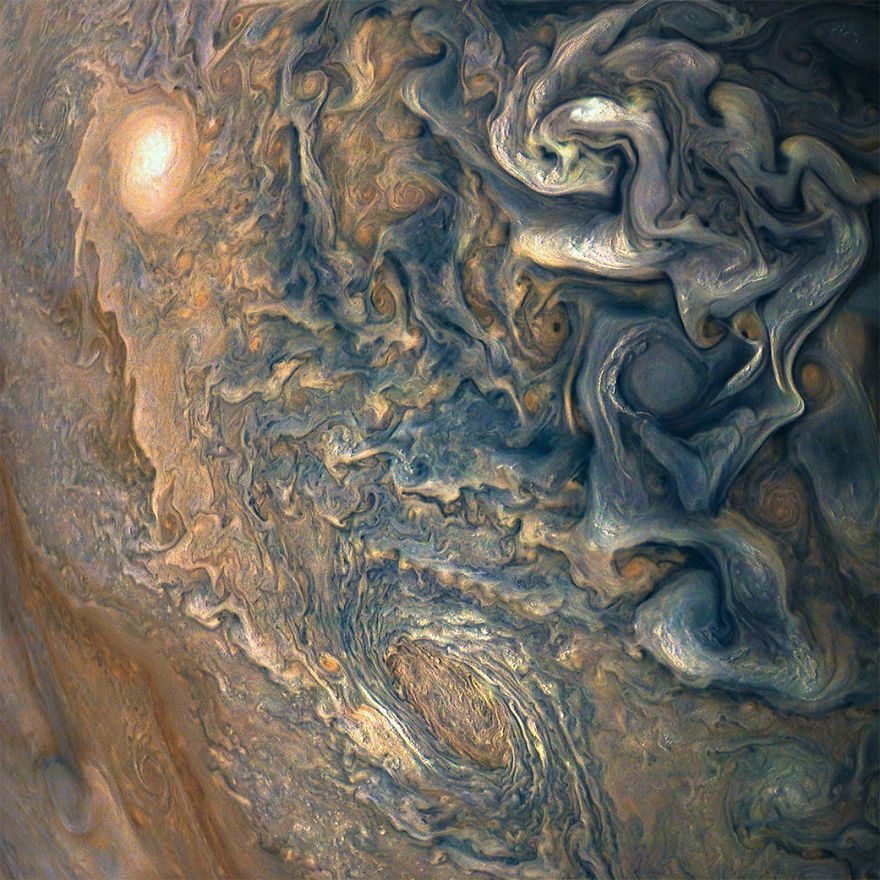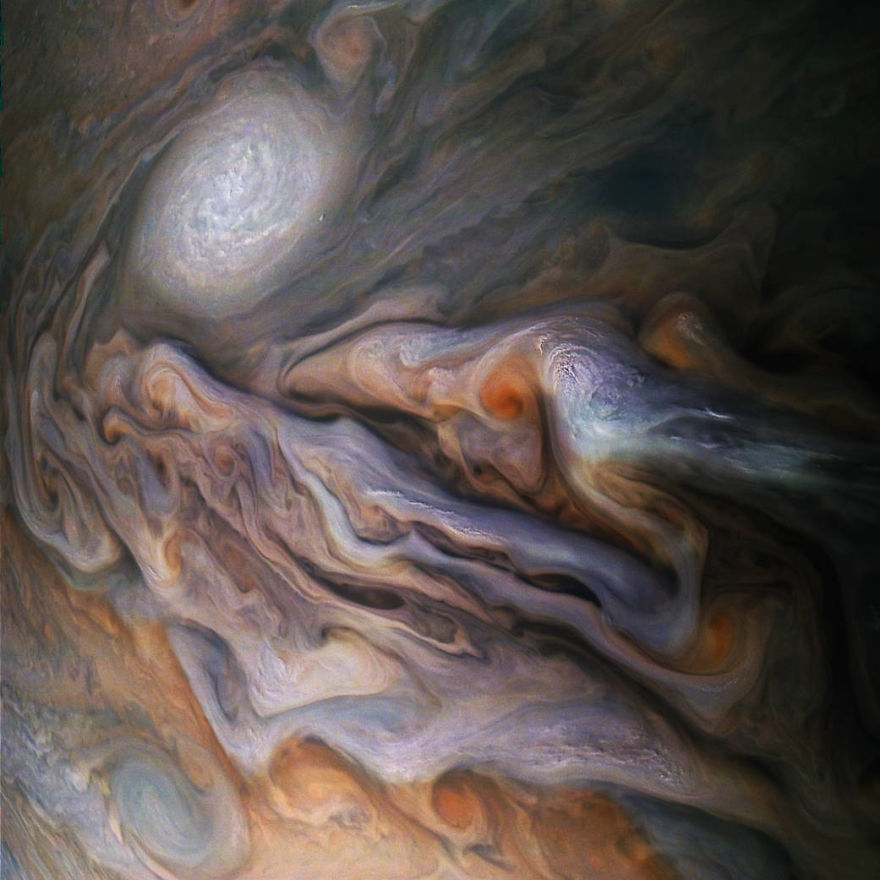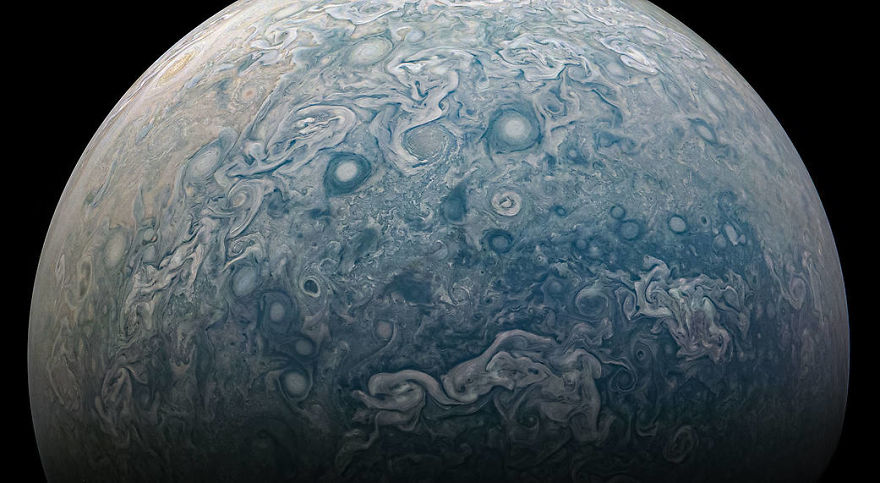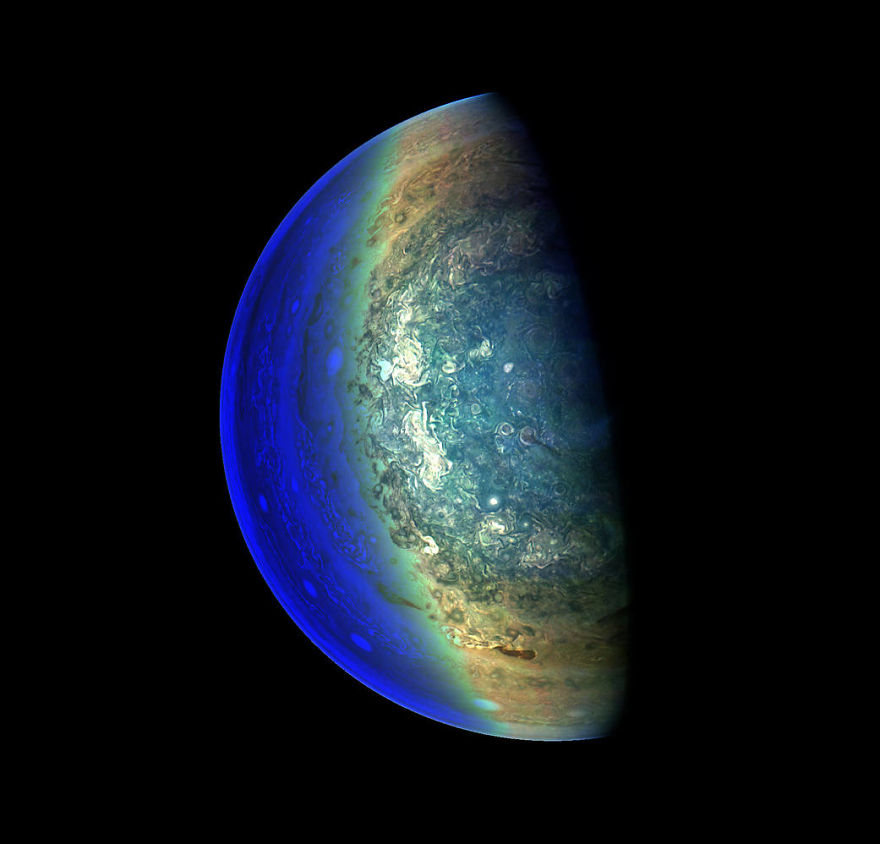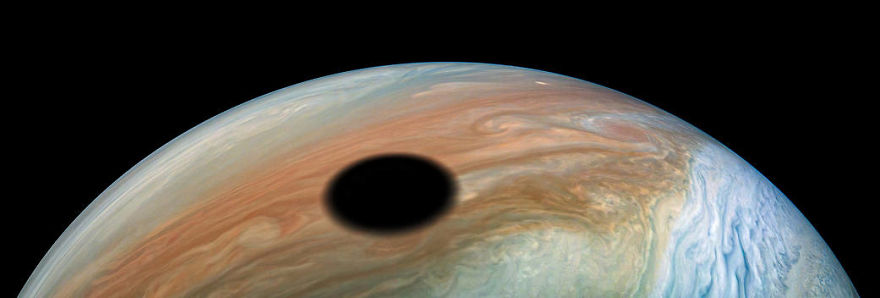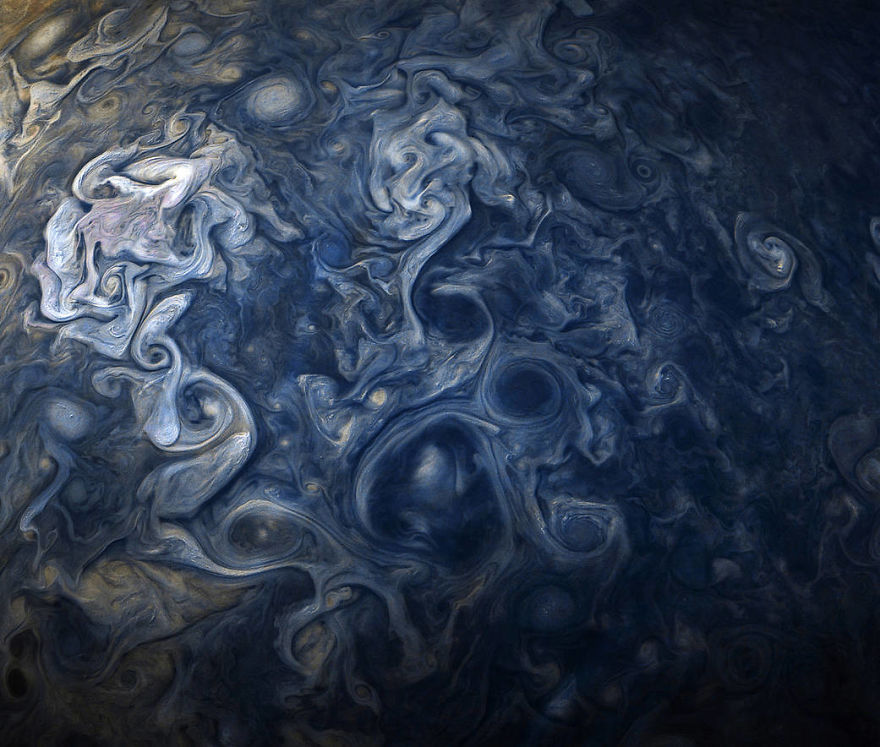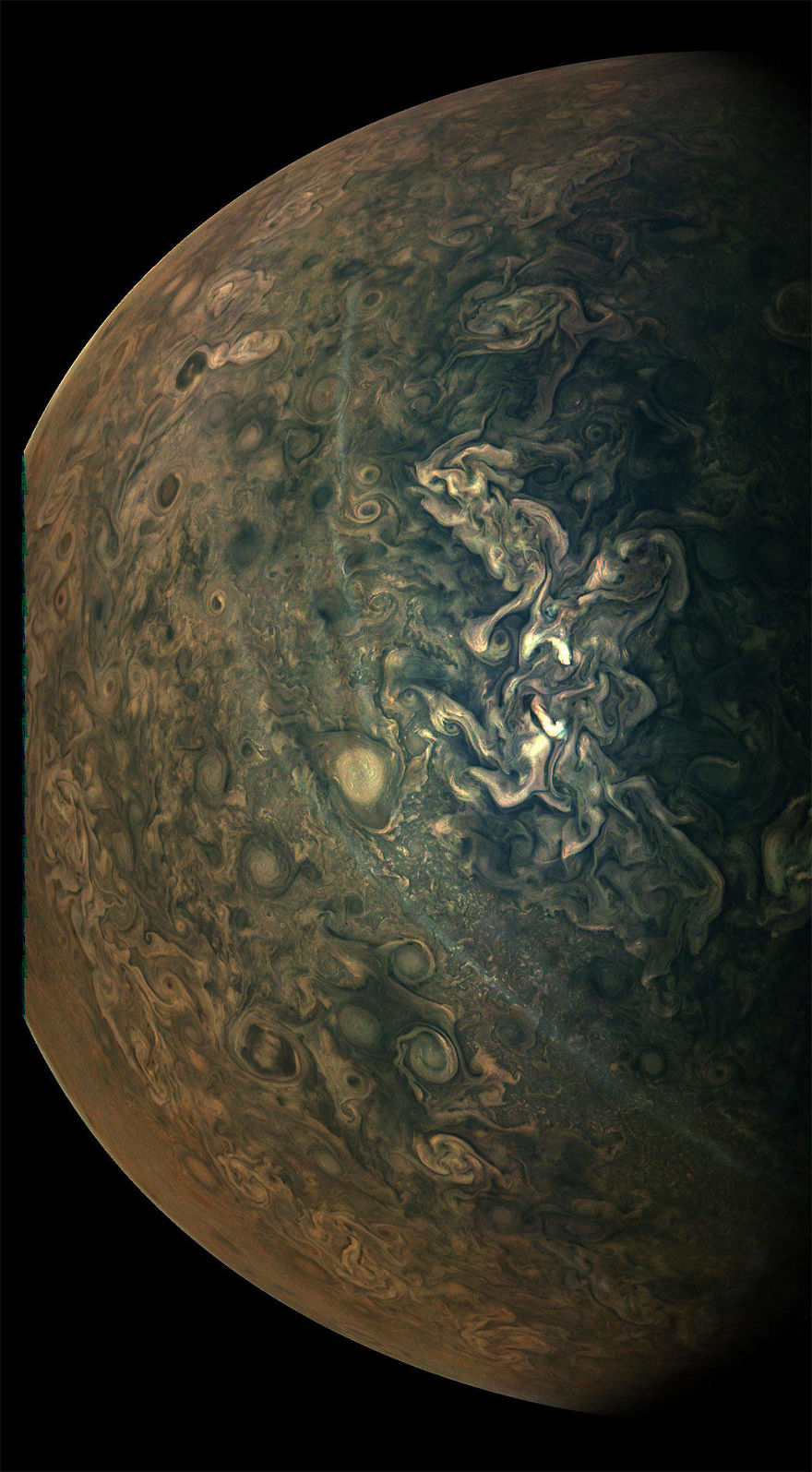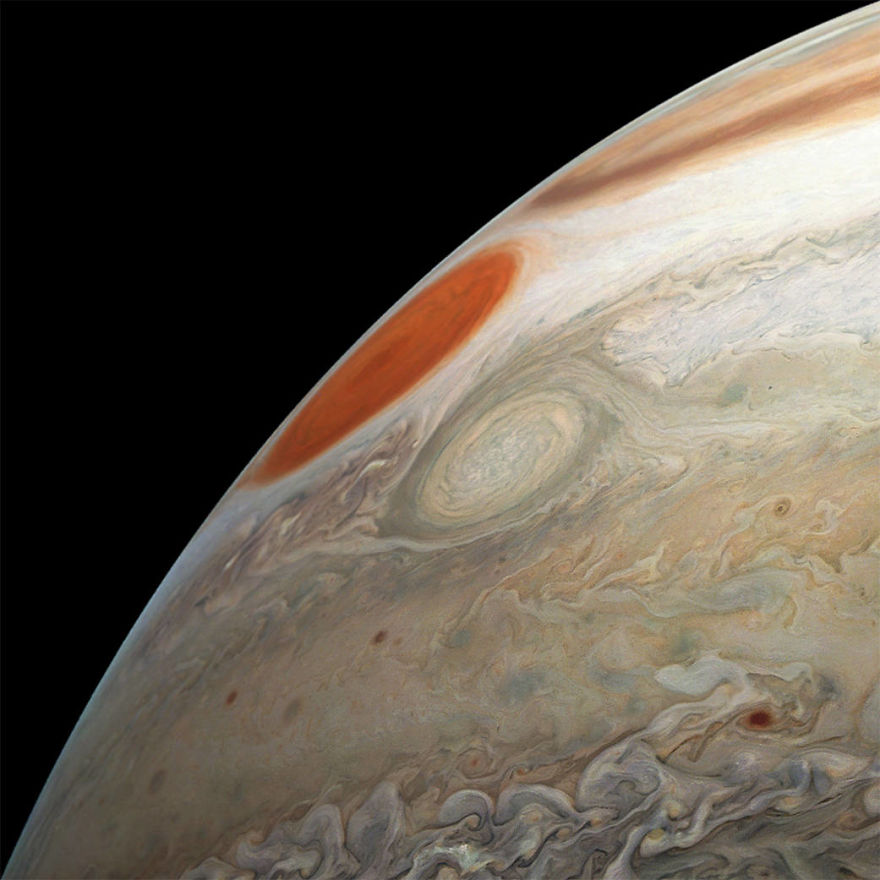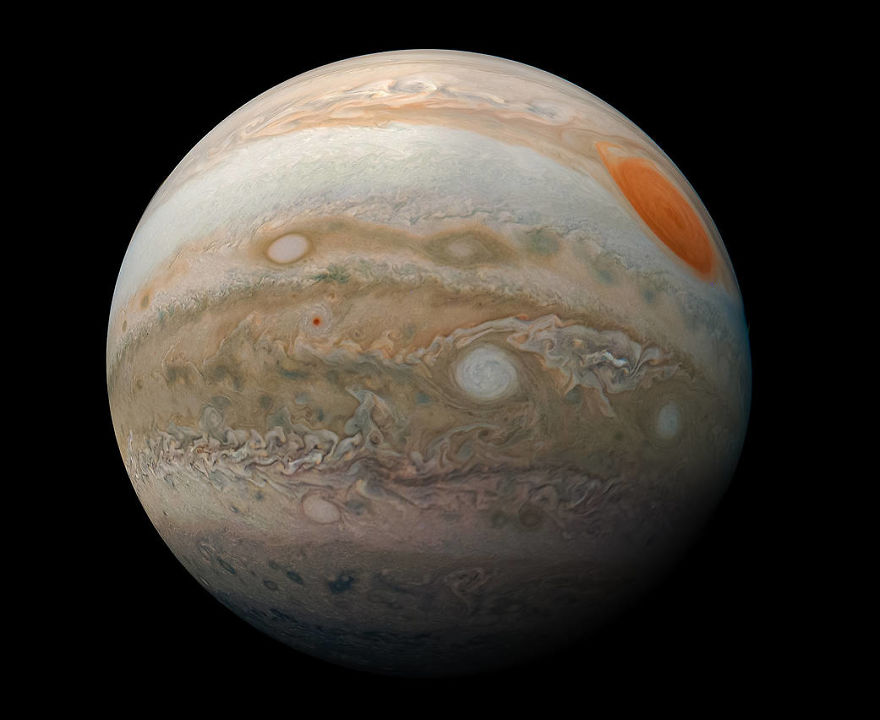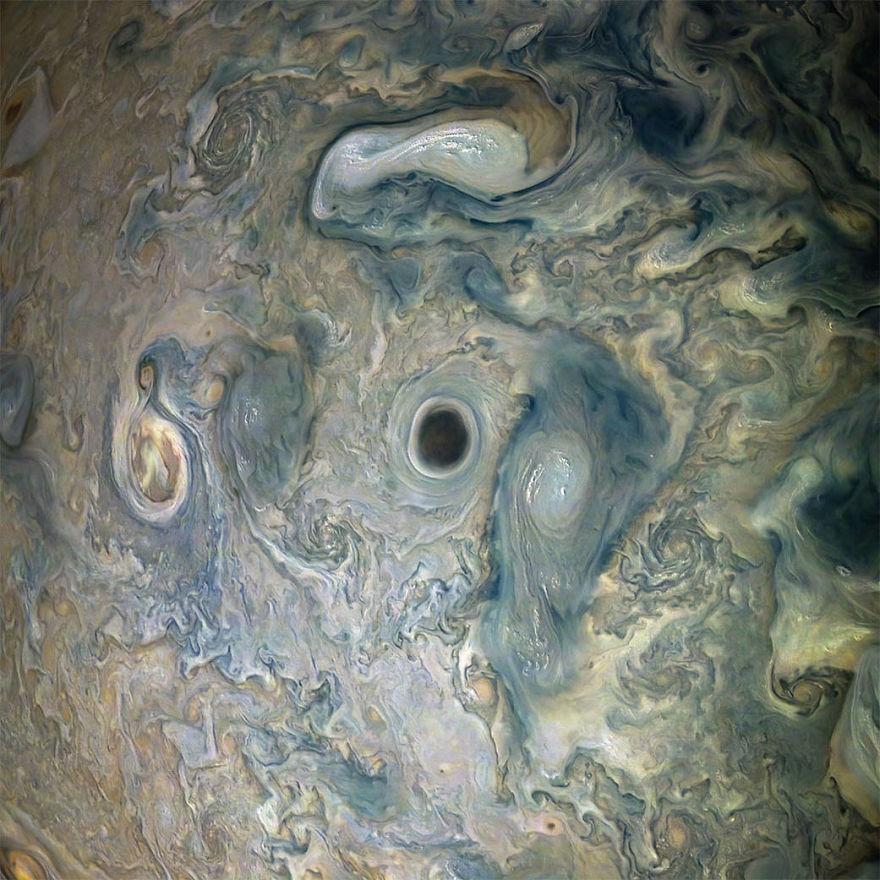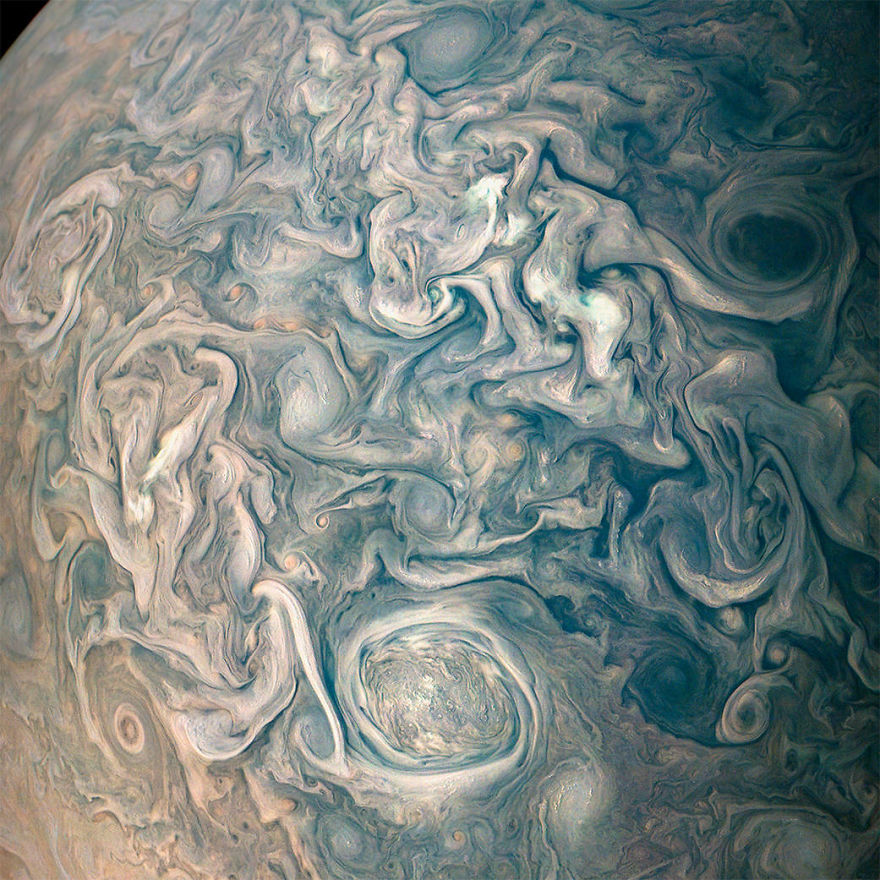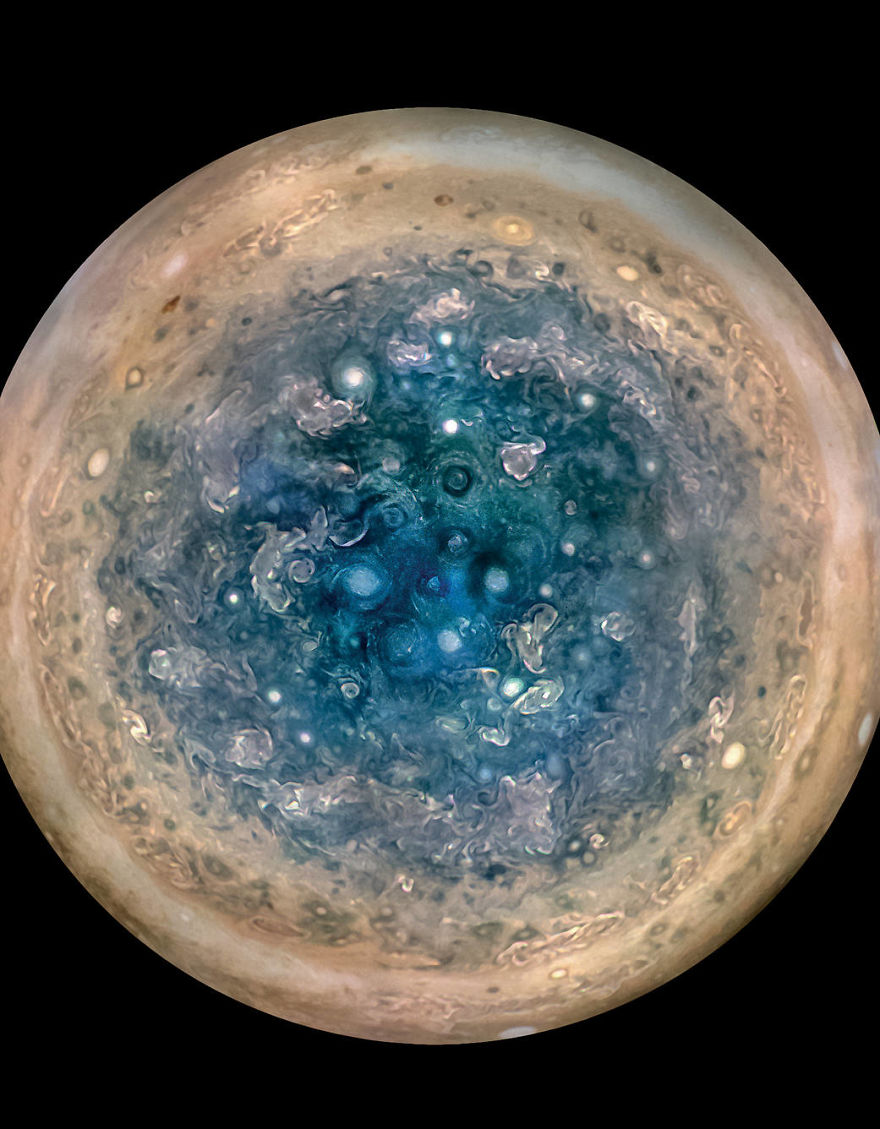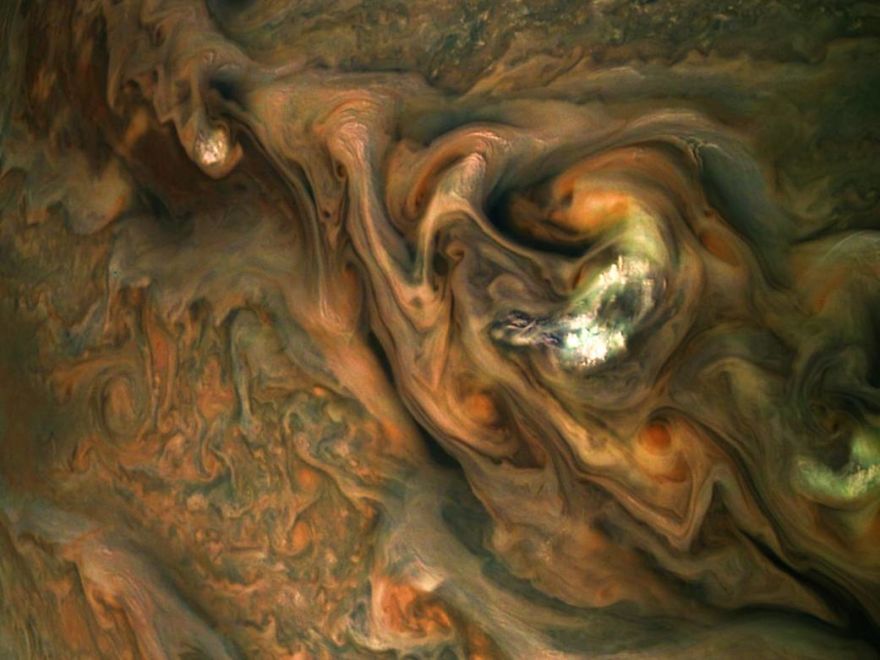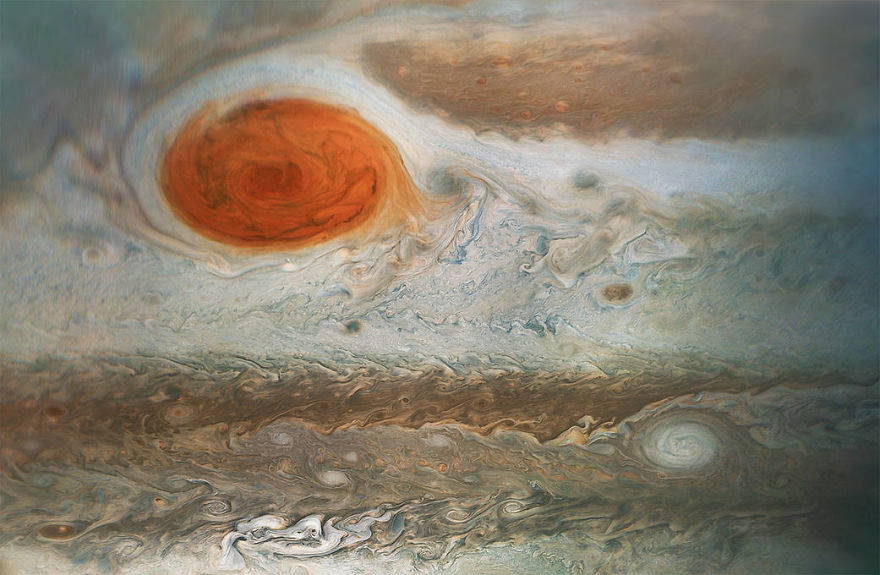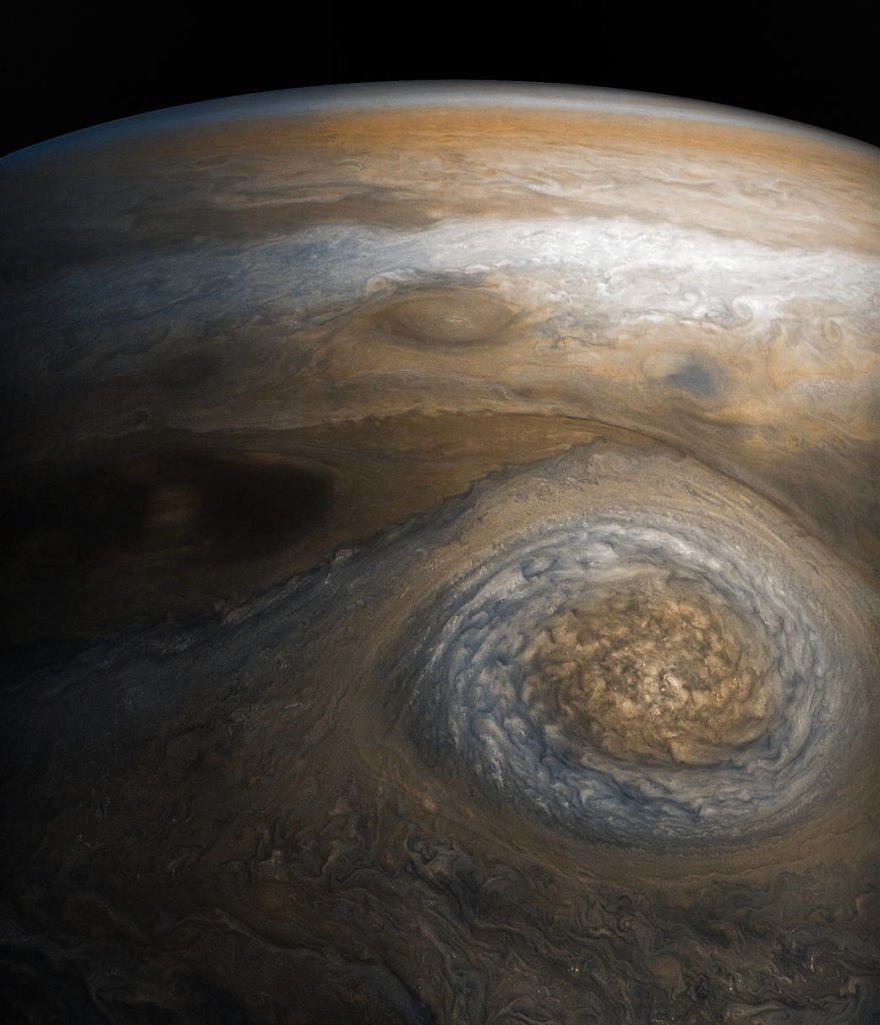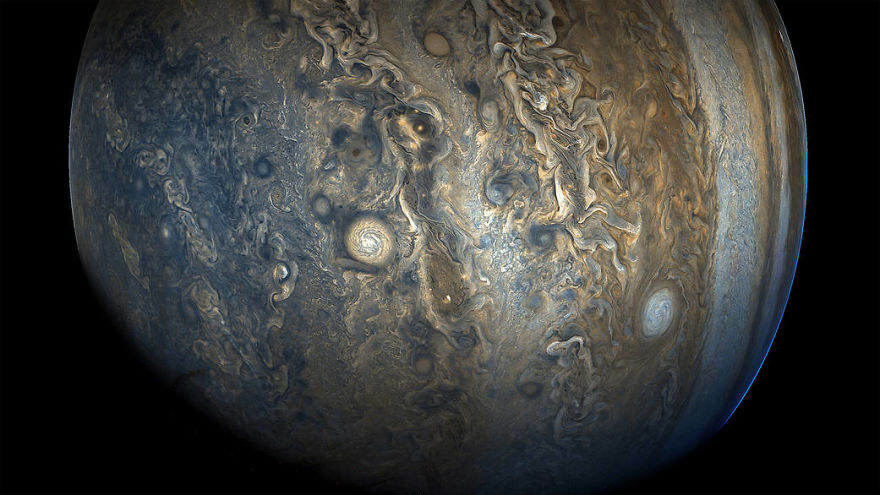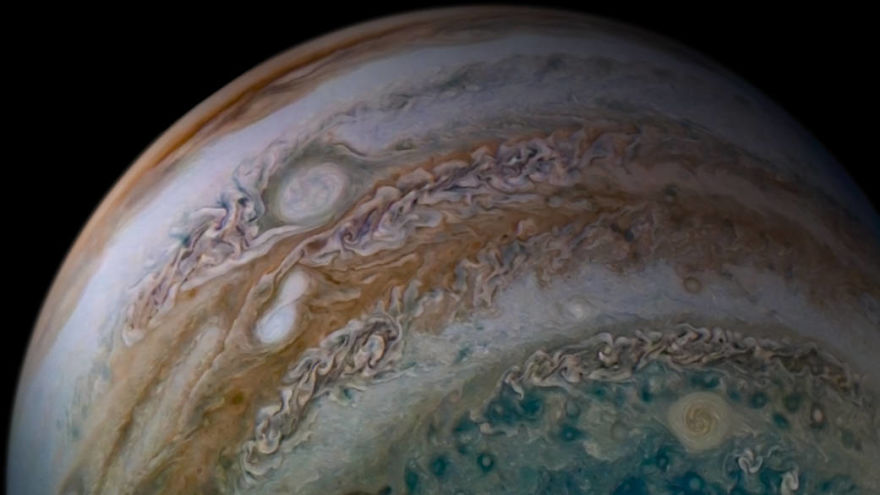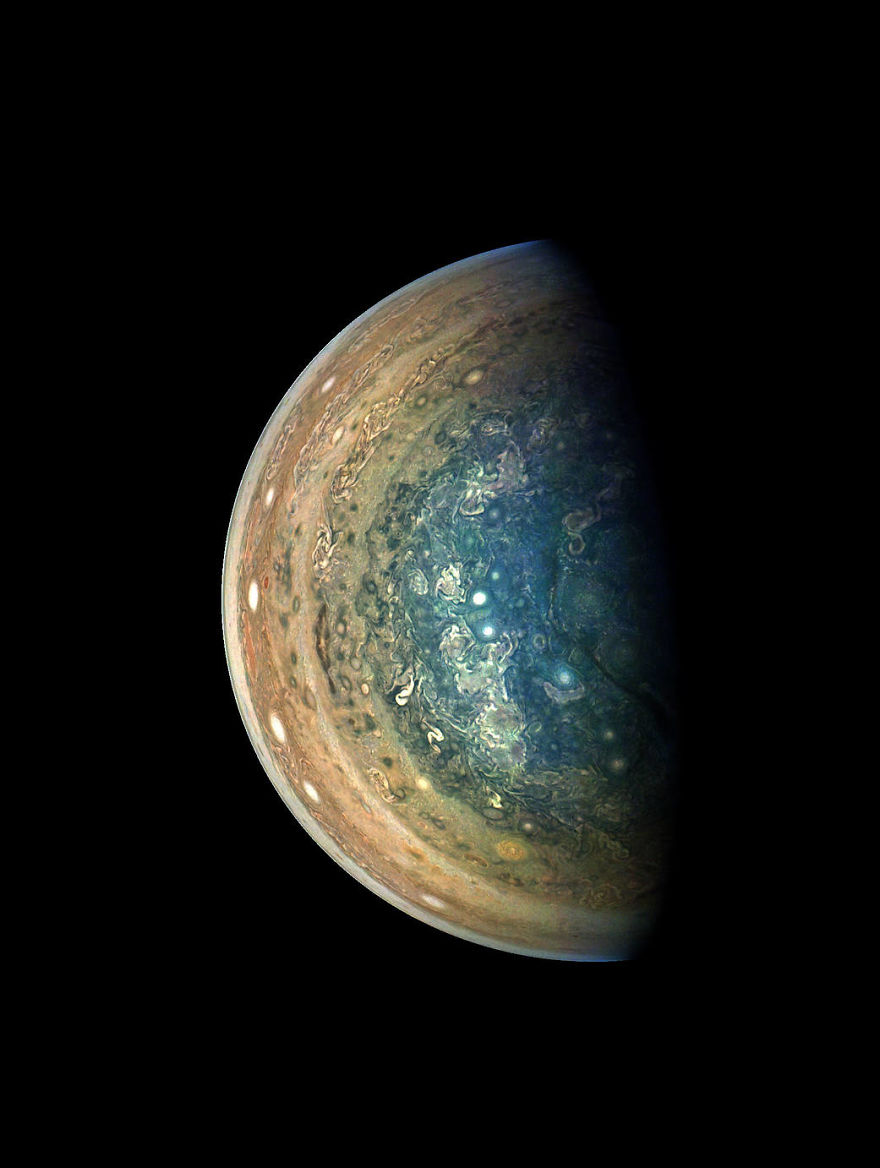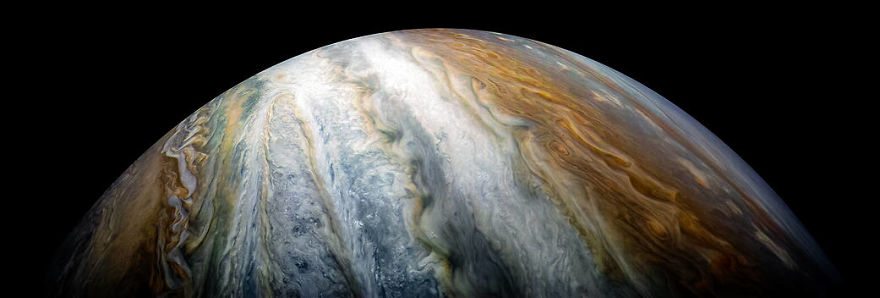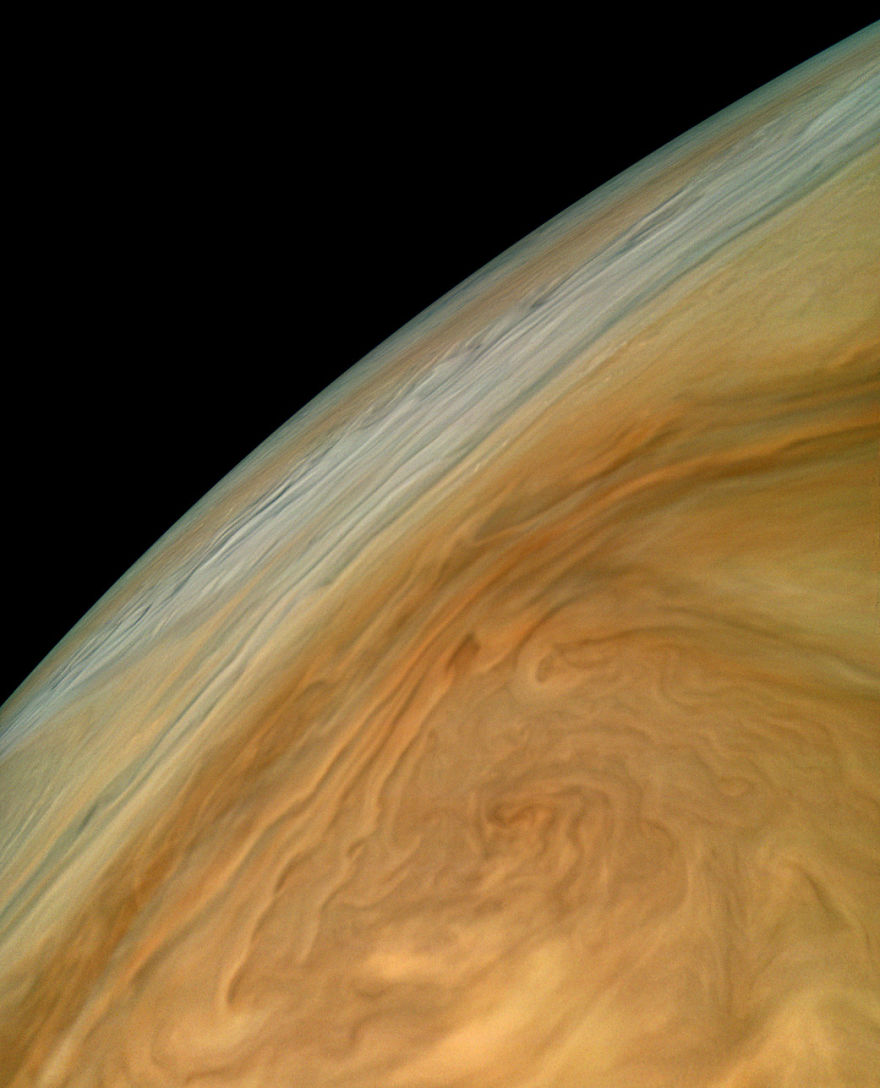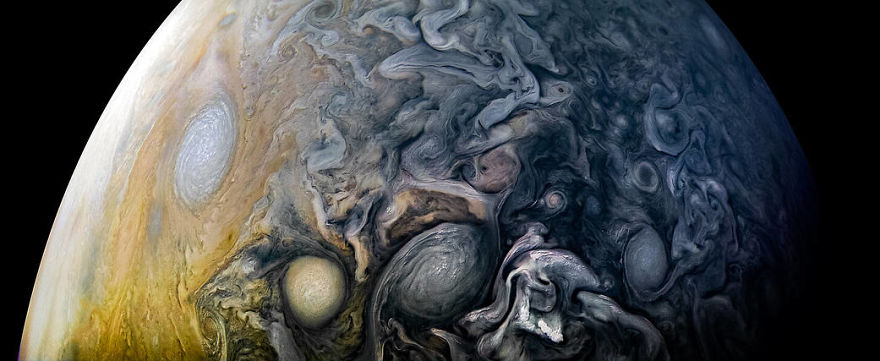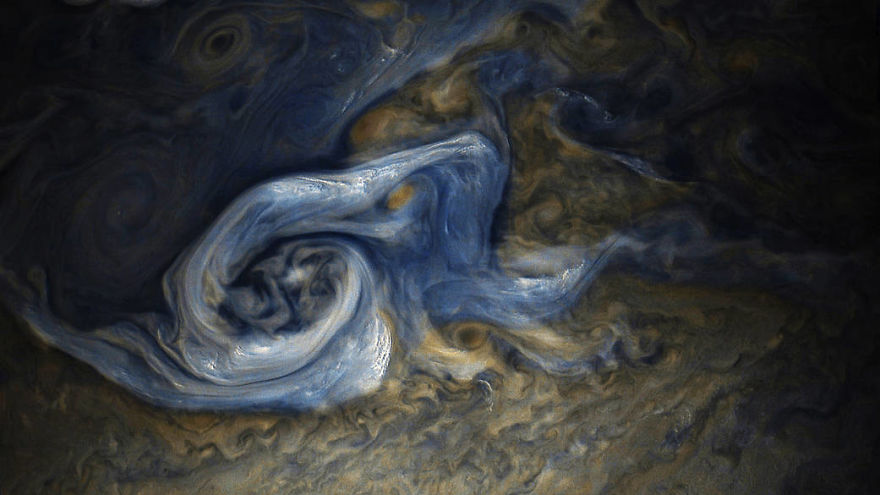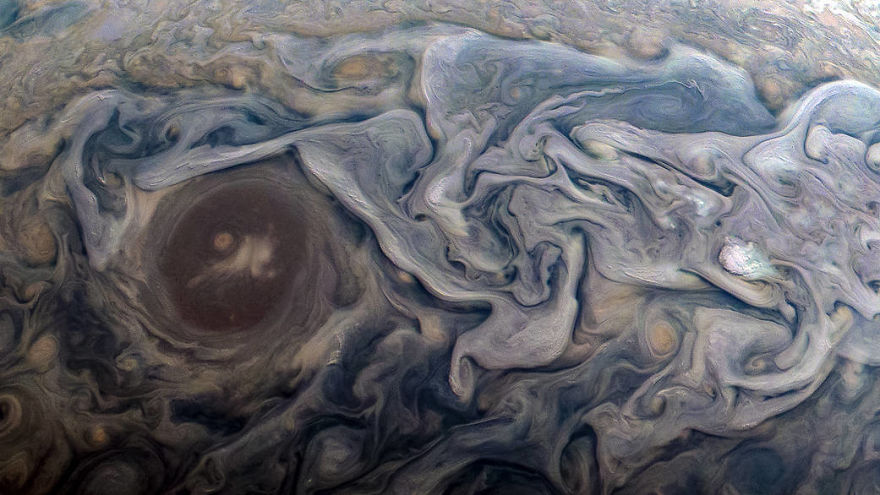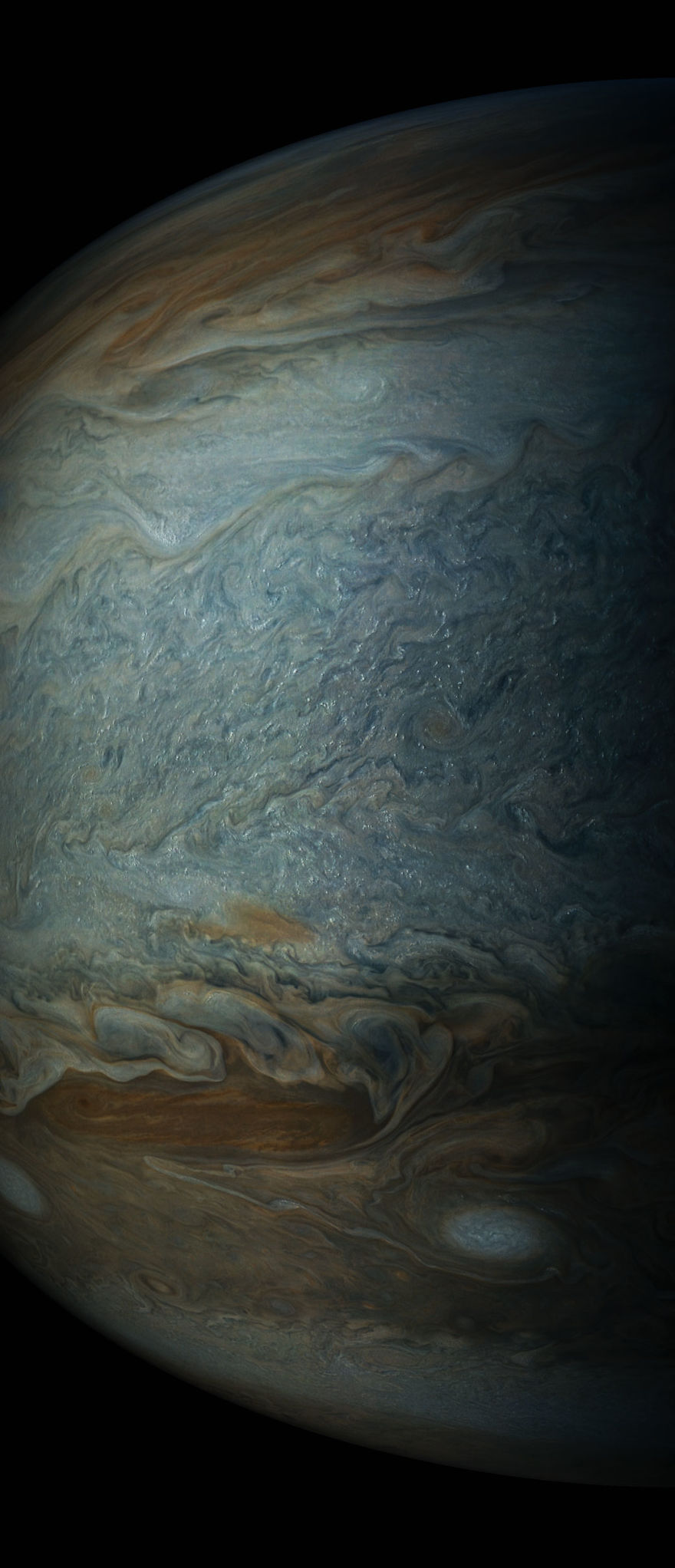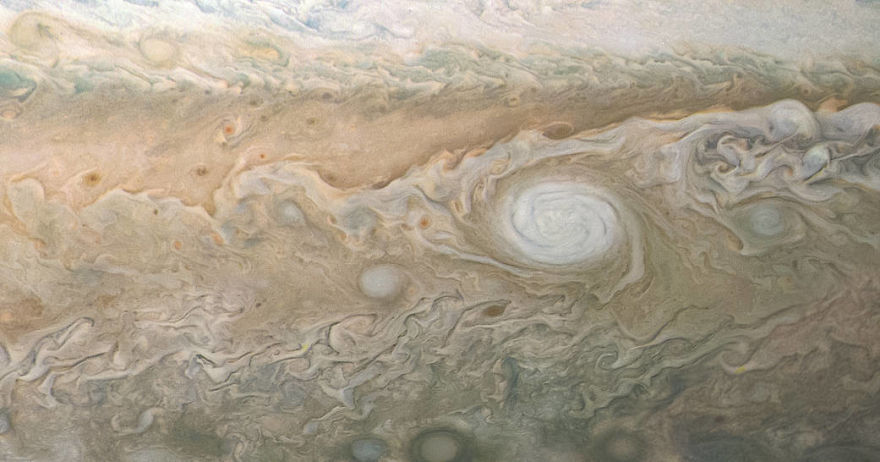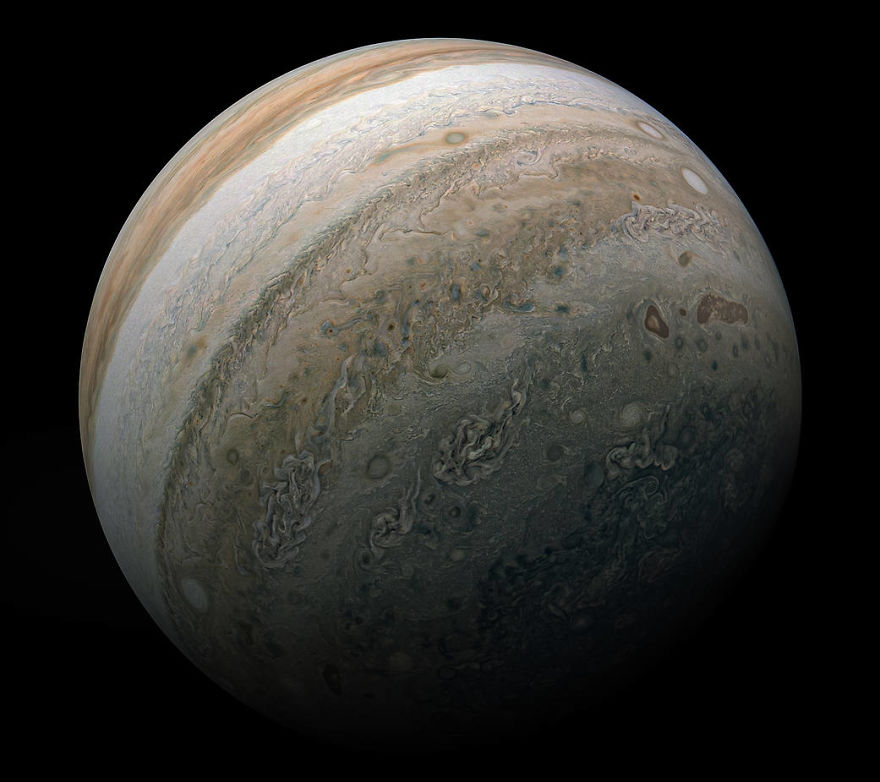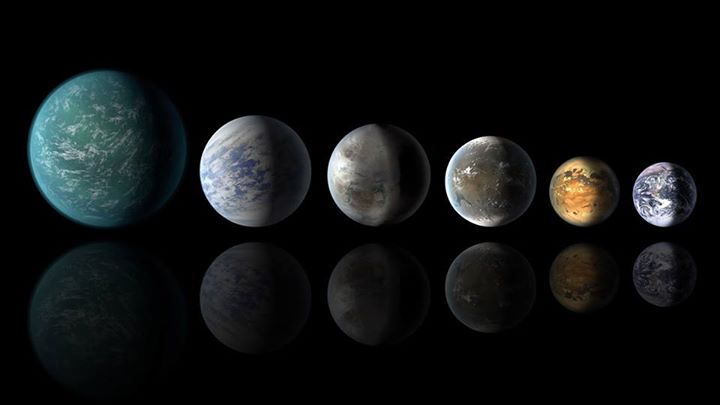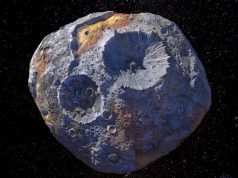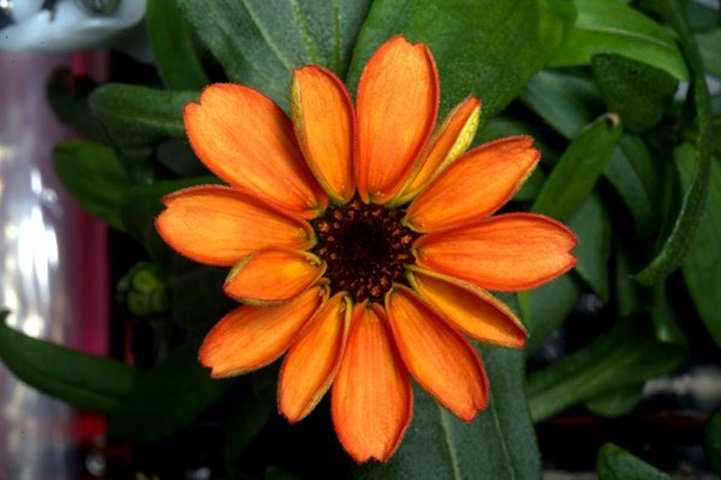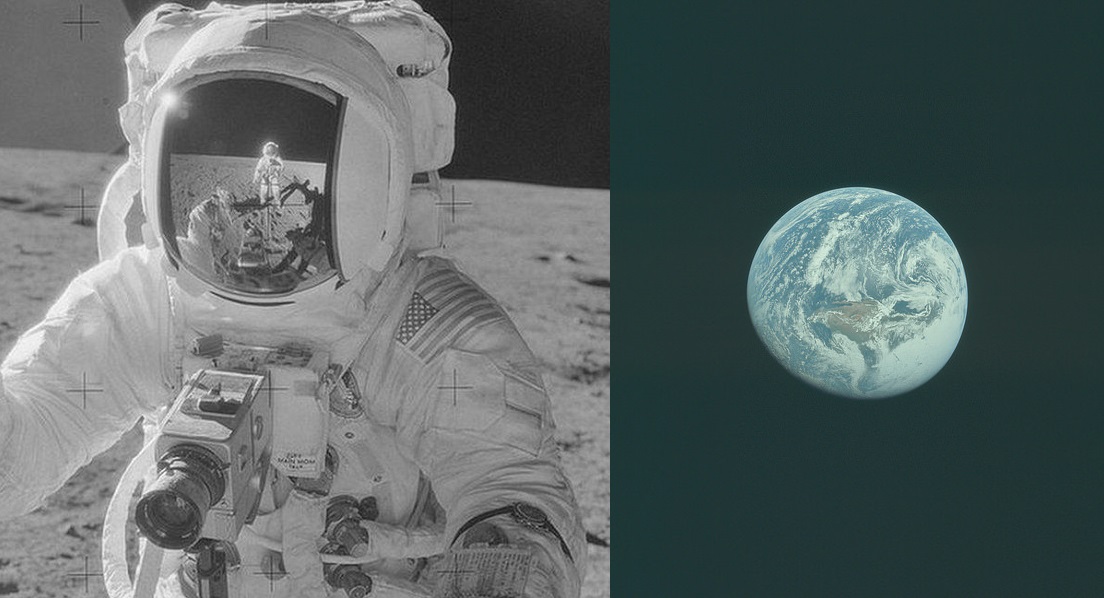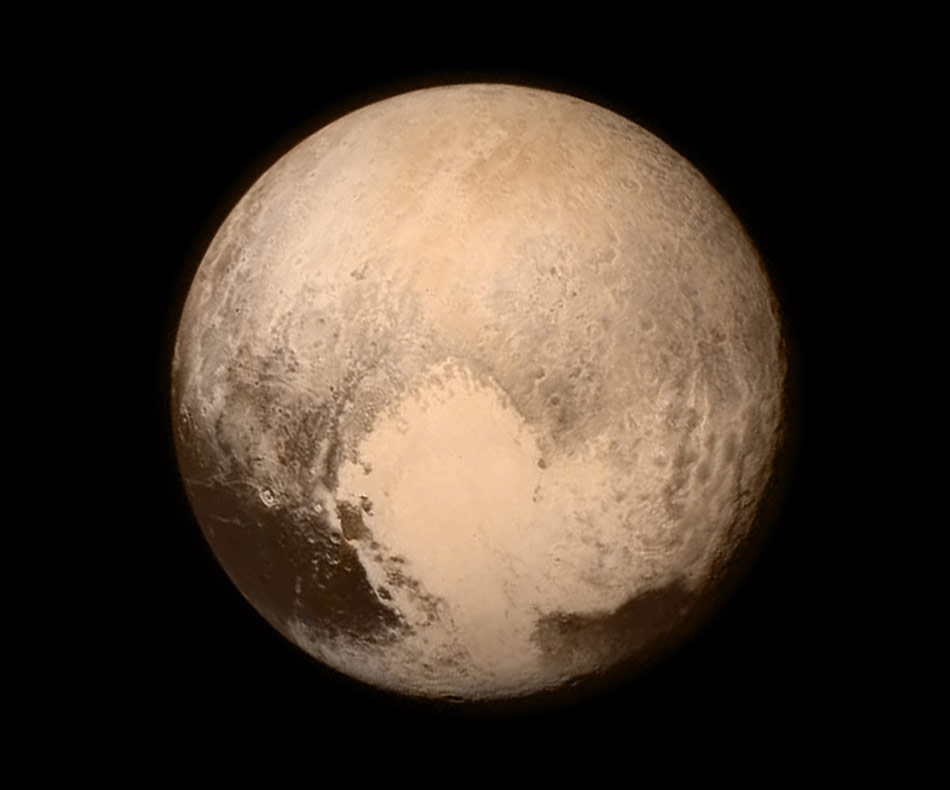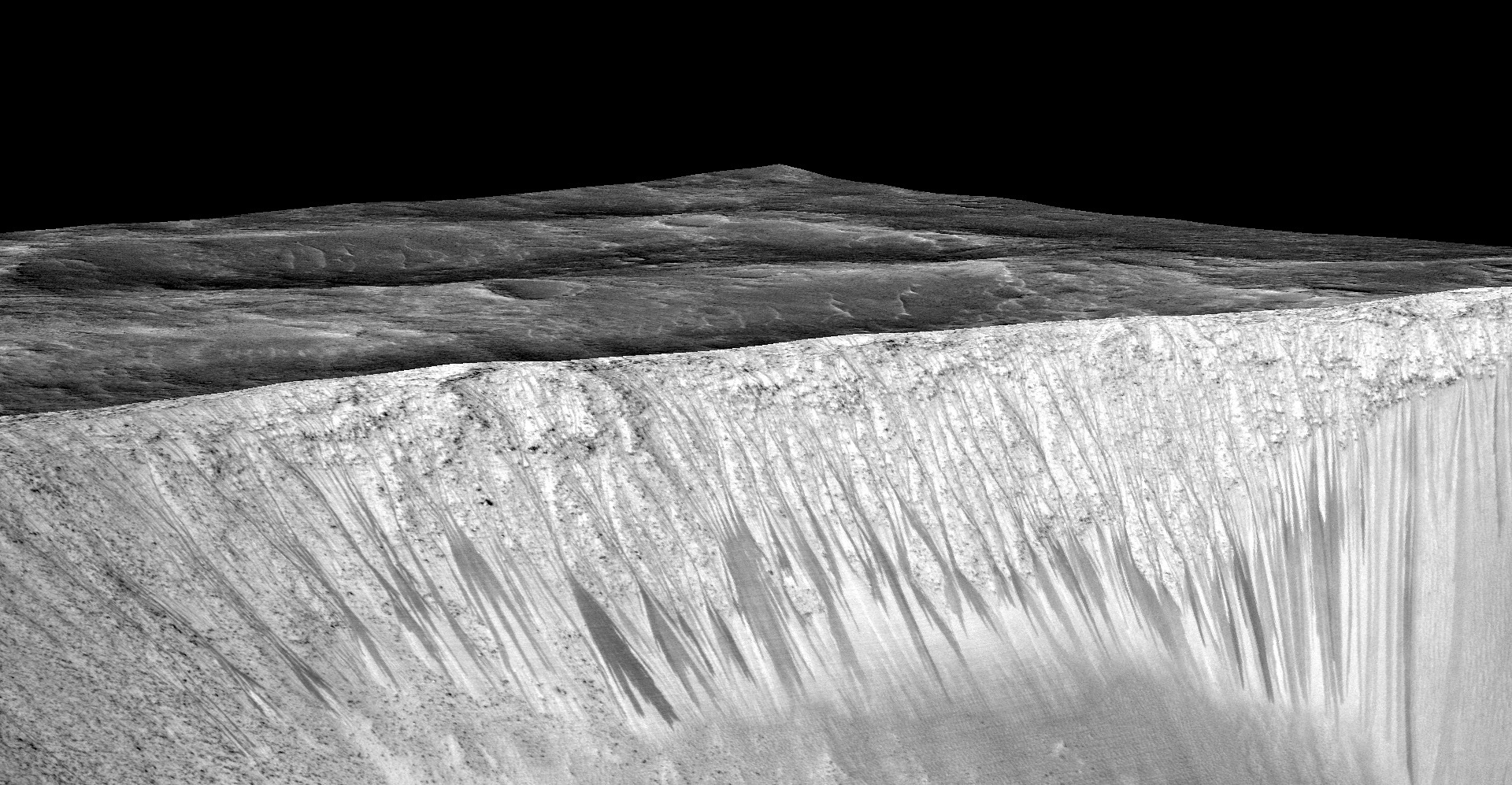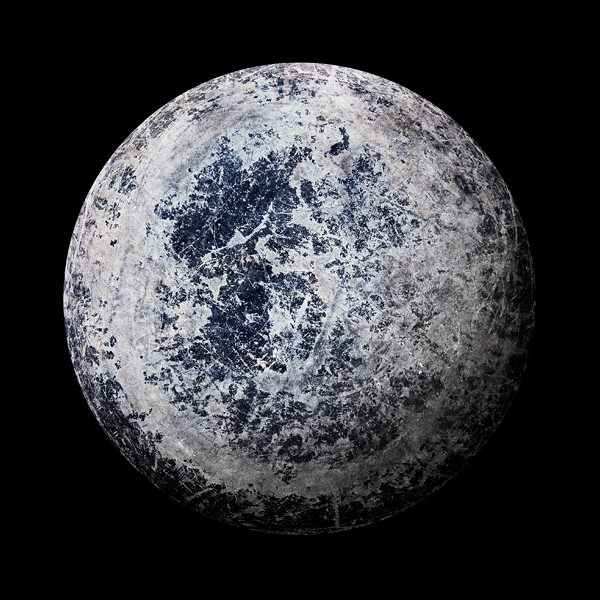Marvel at the Largest Planet in Our Solar System, 484 Million Miles Away
NASA’s Juno spacecraft first passed closely by Jupiter, back in 2016. Since then, it has been taking high definition photographs of the largest planet in our solar system. The images are just stunning, and of course serve the purpose of helping scientists learn more about the gas giant. Recently, NASA released a set of new photographs, taken from Juno, depicting Jupiter. Some of them look like post-impressionist paintings while others seem straight-out unreal.
We hope this takes your mind away (try 484 million miles away) from the troubles of everyday life during the COVID-19 outbreak – the lockdown, quarantine, all the usual suspects.
More info: nasa.gov
NASA’s Juno spacecraft was a little more than one Earth diameter from Jupiter when it captured this mind-bending, color-enhanced view of the planet’s tumultuous atmosphere.
A multitude of swirling clouds in Jupiter’s dynamic North North Temperate Belt is captured in this image from NASA’s Juno spacecraft. Appearing in the scene are several bright-white “pop-up” clouds as well as an anticyclonic storm, known as a white oval.
During its 24th close flyby of Jupiter, NASA’s Juno spacecraft captured this view of a chaotic, stormy area of the planet’s northern hemisphere known as a folded filamentary region. Jupiter has no solid surface in the same way Earth does. Data collected by Juno indicate that some of the giant planet’s winds run deeper and last longer than similar atmospheric processes on Earth.
This image captures the swirling cloud formations around the south pole of Jupiter, looking up toward the equatorial region.
Jupiter’s volcanically active moon Io casts its shadow on the planet in this dramatic image from NASA’s Juno spacecraft. As with solar eclipses on the Earth, within the dark circle racing across Jupiter’s cloud tops one would witness a full solar eclipse as Io passes in front of the Sun.
See Jovian clouds in striking shades of blue in this new view taken by NASA’s Juno spacecraft.
NASA’s Juno mission captured this look at Jupiter’s tumultuous northern regions during the spacecraft’s close approach to the planet on Feb. 17, 2020.
This image of Jupiter’s turbulent southern hemisphere was captured by NASA’s Juno spacecraft as it performed its most recent close flyby of the gas giant planet on Dec. 21, 2018.
This striking view of Jupiter’s Great Red Spot and turbulent southern hemisphere was captured by NASA’s Juno spacecraft as it performed a close pass of the gas giant planet.
NASA’s Juno spacecraft captured this view of an area within a Jovian jet stream showing a vortex that has an intensely dark center. Nearby, other features display bright, high altitude clouds that have puffed up into the sunlight.
This image captures swirling cloud belts and tumultuous vortices within Jupiter’s northern hemisphere.
Thick white clouds are present in this JunoCam image of Jupiter’s equatorial zone. These clouds complicate the interpretation of infrared measurements of water. At microwave frequencies, the same clouds are transparent, allowing Juno’s Microwave Radiometer to measure water deep into Jupiter’s atmosphere. The image was acquired during Juno’s flyby of the gas giant on Dec. 16, 2017.
This image shows Jupiter’s south pole, as seen by NASA’s Juno spacecraft from an altitude of 32,000 miles (52,000 kilometers). The oval features are cyclones, up to 600 miles (1,000 kilometers) in diameter. Multiple images taken with the JunoCam instrument on three separate orbits were combined to show all areas in daylight, enhanced color, and stereographic projection.
This view from NASA’s Juno spacecraft captures colorful, intricate patterns in a jet stream region of Jupiter’s northern hemisphere known as “Jet N3.”
This image of Jupiter’s iconic Great Red Spot and surrounding turbulent zones was captured by NASA’s Juno spacecraft.
A dynamic storm at the southern edge of Jupiter’s northern polar region dominates this Jovian cloudscape, courtesy of NASA’s Juno spacecraft.
See Jupiter’s southern hemisphere in beautiful detail in this new image taken by NASA’s Juno spacecraft. The color-enhanced view captures one of the white ovals in the “String of Pearls,” one of eight massive rotating storms at 40 degrees south latitude on the gas giant planet.
This view of Jupiter’s atmosphere from NASA’s Juno spacecraft includes something remarkable: two storms caught in the act of merging.
This image of Jupiter’s swirling south polar region was captured by NASA’s Juno spacecraft as it neared completion of its tenth close flyby of the gas giant planet.
Colorful swirling cloud belts dominate Jupiter’s southern hemisphere in this image captured by NASA’s Juno spacecraft.
Colorful swirling clouds in Jupiter’s North Equatorial Belt practically fill this image from NASA’s Juno spacecraft. This is the closest image captured of the Jovian clouds during this recent flyby of the gas giant planet.
See intricate cloud patterns in the northern hemisphere of Jupiter in this new view taken by NASA’s Juno spacecraft.
This color-enhanced image of a massive, raging storm in Jupiter’s northern hemisphere was captured by NASA’s Juno spacecraft during its ninth close flyby of the gas giant planet.
Dramatic atmospheric features in Jupiter’s northern hemisphere are captured in this view from NASA’s Juno spacecraft. The new perspective shows swirling clouds that surround a circular feature within a jet stream region called “Jet N6.”
Small bright clouds dot Jupiter’s entire south tropical zone in this image acquired by JunoCam on NASA’s Juno spacecraft on May 19, 2017, at an altitude of 7,990 miles (12,858 kilometers). Although the bright clouds appear tiny in this vast Jovian cloudscape, they actually are cloud towers roughly 30 miles (50 kilometers) wide and 30 miles (50 kilometers) high that cast shadows on the clouds below. On Jupiter, clouds this high are almost certainly composed of water and/or ammonia ice, and they may be sources of lightning. This is the first time so many cloud towers have been visible, possibly because the late-afternoon lighting is particularly good at this geometry.
A swirling, oval white cloud in Jupiter’s South South Temperate Belt is captured in this image from NASA’s Juno spacecraft. Known as White Oval A5, the feature is an anticyclonic storm. An anticyclone is a weather phenomenon where winds around the storm flow in the direction opposite to those of the flow around a region of low pressure.
NASA’s Juno mission captured this look at the southern hemisphere of Jupiter on Feb. 17, 2020, during the spacecraft’s most recent close approach to the giant planet.
This image captures the intensity of the jets and vortices in Jupiter’s North North Temperate Belt.

